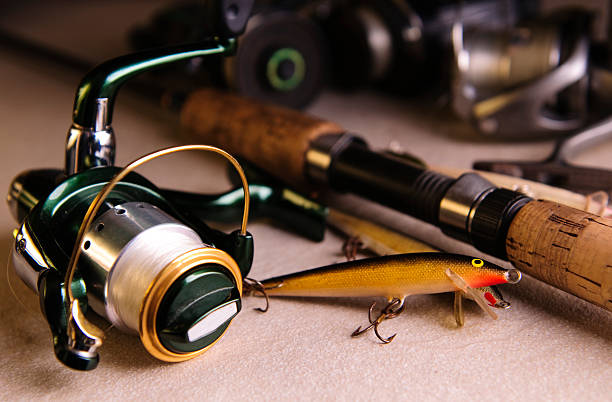Introduction
A fishing rod is more than just a simple tool; it’s a carefully engineered piece of equipment designed to enhance an angler’s experience and success on the water. To truly understand the magic behind its performance, one must delve into the intricate anatomy that makes up this essential instrument. In this article, we’ll embark on a journey through the various components that constitute a fishing rod, unravelling their functions and how they collectively contribute to casting accuracy, sensitivity, and control in pursuit of that prized catch.
Rod Blank: The Backbone of Performance
At the core of every fishing rod lies the rod blank, the main shaft of the rod. The rod blank’s material, length, and construction play pivotal roles in determining the rod’s action, power, and overall performance. It’s often made from materials like graphite, fiberglass, or a combination of both. Graphite blanks are favoured for their lightweight and sensitive nature, while fiberglass offers durability and strength. The length of the rod blank affects casting distance and leverage, making longer blanks suitable for longer casts and bigger fish. A rod’s action – whether it’s slow, medium, or fast – defines how the blank bends and flexes under pressure, influencing casting accuracy and the rod’s responsiveness to strikes.
Guides: The Pathway for Lines
Guides, also known as eyelets, are the small rings mounted along the length of the rod blank. Their primary function is to guide the fishing line from the reel to the tip of the rod during casting and reeling. Guides play a crucial role in controlling the line’s movement, preventing tangles, and ensuring smooth line flow. Guides are often made from materials like ceramic, stainless steel, or titanium to minimise friction and withstand the wear caused by fishing lines. The guide closest to the reel is the largest and is called the stripper guide, while the guides along the rest of the rod progressively decrease in size.
Guide Inserts: Protecting the Line
Many modern guides come equipped with inserts, small rings made from materials like ceramic or silicon carbide, which protect the fishing line from direct contact with the guide frame. Guide inserts reduce friction and line wear during casting and reeling, enabling longer casts, and extending the life of the fishing line. High-quality inserts enhance casting performance and sensitivity, transmitting vibrations from the line to the angler’s hand, enabling them to detect even the subtlest of strikes.
Reel Seat: The Connection Point
The reel seat is the component that secures the fishing reel to the fishing rod. It’s positioned above the handle and serves as the connection point between the two. Reel seats come in various designs, from simple locking rings to more intricate systems with ergonomic shapes for added comfort. The reel seat’s stability and proper fitting are crucial for ensuring that the reel remains securely attached during casting, reeling, and battling fish.
Handle and Grip: Comfort and Control
The handle, often referred to as the grip, is where the angler holds the fishing rod. It plays a vital role in providing comfort and control during fishing. Handles can be made from materials like cork, EVA foam, or synthetic materials. Cork handles offer a traditional and comfortable grip, while EVA foam handles provide durability and cushioning. The length of the handle can influence casting and reeling techniques, and some handles feature contoured designs for ergonomic comfort during extended fishing sessions.
Butt Cap: The Finishing Touch
Located at the bottom end of the handle, the butt cap is a small but essential component. It provides a polished finish to the handle, sealing the rod’s construction and offering a comfortable surface for the angler’s hand to rest against. The butt cap is often made from rubber, cork, or other soft materials. Its design can vary from a simple flat cap to more intricate shapes that enhance the rod’s aesthetic appeal.
Ferrules: Connecting Multi-Piece Rods
In multi-piece fishing rods, ferrules are the connections between the individual sections of the rod blank. They ensure that the rod remains aligned and maintains its structural integrity. Ferrules can be made from materials like fiberglass or carbon fibre. Proper alignment of ferrules is crucial to maintain the rod’s performance and casting accuracy. Modern advancements in ferrule technology have led to improved connection systems that reduce weight and enhance the rod’s sensitivity.
Hook Keeper: Keeping It Neat
A hook keeper is a small loop or ring often found just above the handle of the rod. Its purpose is simple yet important—to provide a convenient place to secure the fishing hook when the rod is not in use. The hook keeper prevents hooks from snagging on clothing, equipment, or other objects, reducing the risk of accidents and tangles. It’s a small detail that reflects thoughtful design and practicality in fishing rod construction.
Conclusion
Understanding the intricate components that comprise a fishing rod illuminates the level of engineering and craftsmanship that goes into creating these remarkable tools. Each element – from the rod blank to the guides, reel seat, and grip – serves a specific purpose, contributing to casting accuracy, sensitivity, and overall angling performance. The next time you pick up a fishing rod, remember the symphony of components working in harmony to connect you with the aquatic world, promising a memorable angling experience with every cast and catch.



